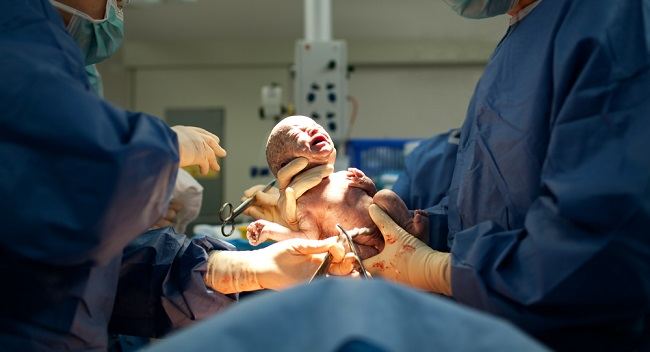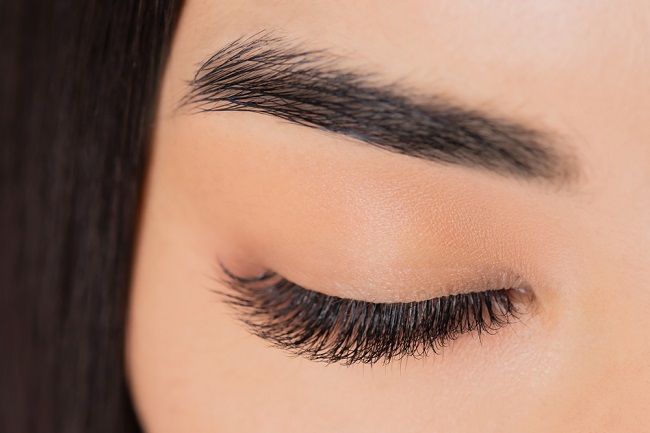Cataract is a condition that is commonly experienced by the elderly. However, cataracts can actually also be experienced by infants and children. Cataracts in infants can cause vision problems and even blindness in children. Therefore, this condition needs to be treated as early as possible.
Cataracts in infants are generally caused by congenital defects or congenital abnormalities. Therefore, this condition is also known as congenital cataract. Because it is a birth defect, cataracts in infants and children can be detected as early as possible since the newborn is born.

Mother and Father need to suspect that your little one has cataracts if he shows some of the following signs and symptoms:
- The pupil of the eye looks gray or whitish when irradiated
- Less responsive or unresponsive to objects moving in front of his eyes
- Fussy when you see bright light
- Abnormal eye movements or nystagmus
In certain cases, cataracts in infants can also cause the baby or child to experience lazy eyes and impaired growth and development.
Causes of Cataracts in Babies and Children
Cataracts in infants and children generally occur due to disturbances in the formation of the eye lens while they are still in the womb. This can be caused by the following conditions:
Infection in the womb
Infections during pregnancy, for example from rubella, chickenpox, syphilis, and toxoplasmosis, can cause the fetus to be born with congenital defects, including cataracts.
Down syndrome
Down syndrome is characterized by impaired growth and development and physical abnormalities, such as congenital heart disease or abnormalities in certain organs. Babies born with Down syndrome also usually experience various eye disorders, such as myopia, hypermetropia, astigmatism, and cataracts.
heredity
Hereditary factors also play a role. If the baby's father, mother, or biological family has a history of cataracts, the baby also has a higher risk of developing cataracts.
In addition to congenital abnormalities in the womb, cataracts in infants and children can also occur due to complications from eye diseases, eye injuries, diabetes, and radiation therapy or long-term consumption of corticosteroid drugs.
How to Overcome Cataracts in Babies and Children
Cataracts in infants can usually be diagnosed when a pediatrician performs an examination of the newborn. If your child is diagnosed with congenital cataracts, the pediatrician will recommend that your child be taken to an ophthalmologist for further examination and treatment to treat cataracts.
To evaluate the condition of the baby's eyes, the ophthalmologist will perform a series of eye examinations consisting of a physical examination of the eye and supporting examinations, such as blood tests, X-rays, as well as ultrasound and CT scans of the eyes. After that, there are several treatment steps that the doctor can take, including:
1. Cataract surgery in babies
If the results of the doctor's examination show that the cataract suffered by your child is mild and does not affect his vision, he may not need to undergo cataract surgery.
However, if the cataract experienced by your child has affected his vision, this condition needs to be treated with eye surgery to remove the lens of the eye affected by the cataract.
Cataract surgery in infants needs to be done to prevent long-term vision problems. Doctors may consider having cataract surgery before the baby is 3 months old.
2. Installation of contact lenses
The use of contact lenses is generally recommended in cataract surgery performed on infants or children under the age of 2 years. The installation of contact lenses can improve the visual acuity of infants and children after undergoing cataract surgery.
3. Intraocular lens insertion
The lens of the eye that is problematic due to cataracts will not be able to function properly. Therefore, when undergoing cataract removal surgery, the ophthalmologist will install an artificial eye lens so that the baby's or child's vision can return to normal.
4. Use of glasses
After a child has cataract surgery in both eyes, the ophthalmologist will usually advise the child to wear glasses. Doctors may also recommend wearing your child's glasses if their vision is not helping with the use of contact lenses.
Not infrequently, the use of glasses is also recommended even if the child has used contact lenses or intraocular lenses.
Causes of cataracts in infants due to genetic disorders, such as Down's syndrome and heredity, is difficult to prevent. However, cataracts in infants due to other causes, such as infection during pregnancy, can be prevented by giving rubella and varicella vaccinations to pregnant women or when the mother is planning to become pregnant.
Cataracts in babies need to be detected early so that they don't interfere with the little one's vision and have an impact on their growth and development. Therefore, mothers and fathers need to immediately see a doctor if they appear to have symptoms of cataracts in babies.
The earlier cataracts in infants are detected and treated, the lower the risk of impaired vision in the Little One.









